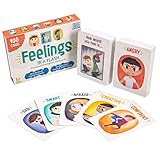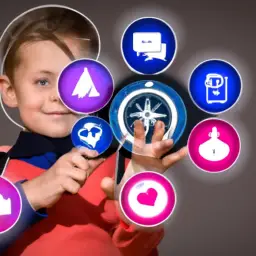Do you want to teach your kids about grit and emotional intelligence? These skills are crucial for success in life, but they aren’t always easy to teach. Luckily, there are some great books out there that can help.
Here are the top 5 books to teach your kids about grit and emotional intelligence.
First up is ‘Grit’by Angela Duckworth. This book explains the concept of grit, which is the ability to persevere through challenges and setbacks. It also provides practical tips for how to develop grit, such as setting goals and practicing self-control. This book is great for kids of all ages, as it can teach them valuable lessons about the importance of hard work and determination.
Key Takeaways
- Teaching kids about grit and emotional intelligence is crucial for success in life.
- Parents can use books to help teach their kids about grit and emotional intelligence.
- Providing a variety of materials and opportunities for children to explore interests and passions can cultivate creativity and innovation.
- Embracing failure and fostering a positive attitude, as well as teaching empathy and self-awareness, can help children develop emotional intelligence.
Grit"by Angela Duckworth
If you want to teach your kids about resilience and perseverance, you can’t go wrong with ‘Grit’ by Angela Duckworth. This book is a must-read for parents who want to help their children develop self-awareness and cultivate emotional intelligence.
The book is based on the notion that grit is a key ingredient to success and that it can be taught. Angela Duckworth is a renowned psychologist who has spent years studying the concept of grit.
In her book, she discusses how teaching perseverance and resilience through grit can help children achieve their goals and overcome challenges. She provides practical strategies for parents to help their kids develop grit, such as encouraging them to set long-term goals and celebrating their progress along the way.
With ‘Grit’, parents can learn how to help their kids become more resilient, persistent, and focused on achieving their dreams.
The Most Magnificent Thing"by Ashley Spires
So, you’re looking to encourage creativity and innovation in your kids? Well, let me introduce you to ‘The Most Magnificent Thing’ by Ashley Spires.
This book not only teaches the importance of perseverance and hard work, but also embraces the idea of failure and learning from mistakes. It fosters a positive attitude towards problem-solving and encourages children to keep trying until they succeed.
Encouraging Creativity and Innovation
To cultivate your child’s creativity and innovation, you’ll need to provide them with a variety of materials and opportunities to explore their interests and passions. This means allowing them to play with different toys, art supplies, and gadgets, and giving them the freedom to experiment and make mistakes.
Encouraging creativity means allowing your child to express themselves in their own unique way. It’s important to remember that creativity isn’t limited to traditional art forms such as painting or drawing, but can also include music, writing, and even science experiments.
To nurture innovation, you can provide your child with challenges that require them to think outside the box and come up with creative solutions. This can mean setting up a scavenger hunt, constructing a fort, or creating a new game.
By providing your child with opportunities to problem-solve and innovate, you’re helping them develop important skills that will serve them well in the future. Remember that the key to encouraging creativity and nurturing innovation is to provide a supportive environment that allows your child to take risks and learn from their experiences.
Embracing Failure and Learning from Mistakes
When you embrace failure and learn from your mistakes, you teach your child that it’s okay to make errors and that it’s an opportunity to learn and grow.
Overcoming obstacles is not easy, but teaching kids resilience and persistence can help them develop a growth mindset.
Encourage your child to try new things and take risks, even if they don’t always succeed.
Teaching kids self-reflection is also important when it comes to embracing failure. Help your child understand what went wrong and how they can improve for next time.
Encourage them to ask questions like, "What could I have done differently?"or "What did I learn from this experience?"
By doing so, you’re showing them that mistakes are not failures, but rather opportunities for growth and development.
Fostering a Positive Attitude
You can cultivate a bright outlook in your child by modeling positivity and encouraging them to focus on the good things in life. One way to do this is by emphasizing the importance of gratitude. Teach your child to appreciate the things they have and to express their gratitude towards others. This will help them develop a positive attitude towards life and give them a sense of fulfillment and happiness.
Another way to foster a positive attitude in your child is by practicing mindfulness. Encourage your child to be present in the moment and to enjoy the simple pleasures in life. Help them to focus on the here and now and to let go of worry and stress. By teaching your child to practice mindfulness, you’re giving them a powerful tool for managing their emotions and cultivating a positive outlook on life.
The Adventures of Beekle: The Unimaginary Friend"by Dan Santat
Hey, have you checked out ‘The Adventures of Beekle: The Unimaginary Friend’ by Dan Santat? It’s a wonderful book about a little imaginary friend’s journey to find his perfect match and teaches children about the importance of perseverance and friendship. The story follows Beekle, who is tired of waiting to be imagined by a child and decides to take matters into his own hands. He embarks on a journey to the real world, where he faces numerous challenges and obstacles. Through his journey, Beekle learns the importance of perseverance and the power of friendship, eventually finding his perfect match and becoming a beloved imaginary friend.
One of the most significant themes explored in ‘The Adventures of Beekle: The Unimaginary Friend’ is the importance of imagination and the sense of belonging. The book teaches children to embrace their imagination and to believe in themselves, even when they feel like they don’t fit in. By following Beekle’s journey, children learn that it’s okay to be different and that they can find their place in the world through perseverance and determination. Through the power of friendship, Beekle finds a sense of belonging and shows children the importance of having a support system in achieving their goals. By nurturing resilience and determination through storytelling, ‘The Adventures of Beekle: The Unimaginary Friend’ is an excellent tool for parents and educators to help children develop grit and emotional intelligence.
| Pros | Cons |
|---|---|
| Beautifully illustrated | May be too long for younger children |
| Engaging storyline | May be difficult for some children to understand |
| Teaches perseverance and the importance of friendship | May not appeal to children who do not have imaginary friends |
| Promotes imagination and creativity | May not be relatable for children who do not feel like they do not belong |
| Great for helping children develop grit and emotional intelligence | May require additional explanation for children to fully understand the message |
The Dot"by Peter H. Reynolds
‘The Dot’ by Peter H. Reynolds is a charming picture book that illustrates the importance of creativity and self-expression.
The story follows a young girl named Vashti who is struggling with her art class. After becoming frustrated with her inability to draw, her teacher encourages her to simply make a mark and see where it takes her.
Vashti begrudgingly complies and creates a small dot on her paper. From there, she discovers the beauty in simplicity and the endless possibilities of starting with just one small idea.
This book is a fantastic tool for teaching perseverance and nurturing creativity in young children. It teaches them that it’s okay to start small and make mistakes, as long as they keep going and continue to explore their ideas.
By encouraging kids to keep pushing forward and trying new things, ‘The Dot’ inspires them to never give up on their dreams and to always believe in themselves. It’s a valuable lesson that will stick with them for a lifetime.
The Feelings Book"by Todd Parr
You’re going to love ‘The Feelings Book’ by Todd Parr as it helps children develop their emotional intelligence.
This book will teach your little ones how to identify and express their feelings in a healthy way.
With colorful and playful illustrations, it will also help them build empathy and understanding towards others.
Developing Emotional Intelligence
When you’re raising kids, it’s important to help them develop emotional intelligence so they can navigate their feelings and relationships. Teaching empathy and self-awareness are the first steps towards developing emotional intelligence.
Kids need to learn how to put themselves in someone else’s shoes and understand how their actions affect others. Self-awareness is also crucial as it helps kids understand their own emotions and why they feel a certain way.
Nurturing emotional regulation and social skills are also essential for developing emotional intelligence. Kids need to learn how to regulate their emotions and express themselves in a healthy way. This means teaching them how to calm themselves down when they feel upset and how to communicate their feelings effectively.
Social skills are also important as they teach kids how to interact with others in a positive way and build meaningful relationships. By teaching your kids these skills, you’ll be setting them up for success in both their personal and professional lives.
Identifying and Expressing Feelings
Identifying and expressing your feelings is an important skill to develop for understanding yourself and connecting with others. It helps you communicate your emotions and needs effectively, leading to better relationships and a healthier emotional state. To identify your emotions, it’s helpful to use a "feelings wheel,"which breaks down emotions into more specific categories. Here’s an example:
| Primary Emotion | Secondary Emotion | Tertiary Emotion |
|---|---|---|
| Happy | Content | Pleased |
| Sad | Disappointed | Hopeless |
| Angry | Irritated | Frustrated |
| Fearful | Anxious | Insecure |
Once you’ve identified your emotions, it’s important to express them in a healthy way. Bottling up your feelings can lead to emotional distress and affect your physical health. Expressing your feelings can be done through writing, talking to a trusted friend or therapist, or engaging in physical activity. It’s important to remember that expressing your feelings doesn’t mean you have to act on them.
Learning to identify and express your emotions is an important step in developing emotional intelligence and grit. It allows you to understand yourself and others better, leading to stronger relationships and a healthier emotional state. Use the feelings wheel and find healthy ways to express your emotions for a more fulfilling life.
Building Empathy and Understanding of Others
To truly connect with others, it’s essential to build empathy and understanding by putting yourself in their shoes. Building empathy means being able to understand and share the feelings of others, even if they’re different from your own.
It’s important to teach children about empathy and understanding diversity as early as possible, so they can learn to appreciate and respect differences in others. One way to help children build empathy is by exposing them to diverse cultures, beliefs, and traditions. This can be done through books, movies, or even by visiting new places.
Encourage your child to ask questions and learn about different ways of life, and help them understand that everyone has their own unique experiences and perspectives. By doing so, you can help your child develop a sense of empathy and a deeper understanding of the world around them.
Frequently Asked Questions
What age range are these books appropriate for?
When considering age appropriateness and recommended reading levels, it’s important to take into account the individual needs and abilities of your child. While some children may be ready for more advanced reading material at a younger age, others may require more time and support to fully understand and engage with certain concepts.
As a parent, it’s important to be involved in your child’s learning process and to find ways to incorporate lessons about grit and emotional intelligence into everyday life. By choosing books that are appropriate for your child’s age and reading level, you can help them develop important skills and values that will serve them well throughout their lives.
Are there any discussion questions or activities included in these books?
When it comes to discussing grit and emotional intelligence with your kids, it can be helpful to have some discussion ideas or activities to go along with the books you’re using. One idea might be to talk about examples of grit and emotional intelligence in your own life experiences, and encourage your kids to do the same. This can help them see how these concepts play out in real life situations.
Another idea might be to brainstorm ways to apply what you’ve learned from the books to specific scenarios or challenges your family might face. By engaging in these kinds of discussions and activities, you can help your kids develop a deeper understanding of grit and emotional intelligence, and how to apply these skills in their own lives.
Are these books available in different languages?
If you’re wondering about the availability of the books on grit and emotional intelligence, there are some translation options available for certain titles. However, it may depend on the specific book and the language you’re looking for.
Some publishers may have translated versions of their books, while others may not. It’s worth doing some research and checking with your local bookstore or library to see what options are available.
Keep in mind that not all books may have translation options, so it’s important to check beforehand.
Do these books address specific emotions or emotional intelligence skills?
When exploring the themes of grit and emotional intelligence in children’s literature, it’s important to look for books that not only address specific emotions, but also help develop a growth mindset through storytelling.
These books should teach children how to handle difficult situations, persevere through challenges, and empathize with others. By incorporating characters who embody these qualities, children can learn valuable lessons about resilience and self-awareness.
Additionally, books that encourage children to embrace mistakes and view failure as a learning opportunity can help foster a growth mindset, which is essential for emotional intelligence.
Overall, children’s books that focus on grit and emotional intelligence can have a profound impact on a child’s development and should be incorporated into their reading repertoire.
Have these books been studied or evaluated in any way for their effectiveness in teaching grit and emotional intelligence?
If you’re wondering whether the books on the Top 5 Books to Teach Your Kids About Grit and Emotional Intelligence list have been studied or evaluated for their effectiveness in teaching these skills, the answer is yes.
There have been research studies conducted on various books and programs aimed at teaching emotional intelligence and grit to children. These studies typically evaluate the effectiveness of the programs in terms of improving children’s emotional literacy, ability to regulate their emotions, social skills, and academic performance.
While some studies have shown promising results, it’s important to keep in mind that no single book or program can guarantee success, and that the effectiveness of any intervention will depend on a variety of factors, including the child’s individual needs and circumstances.
Conclusion
So there you have it, five fantastic books that can help teach your kids about grit and emotional intelligence. By reading these stories together, you can encourage your children to develop important skills like perseverance, problem-solving, and empathy.
And the best part? These lessons are wrapped up in engaging and entertaining tales that your kids will love.
So the next time you’re looking for a way to help your kids build resilience and emotional intelligence, consider picking up one of these wonderful books. Who knows? You might even learn a thing or two yourself!

















































































































